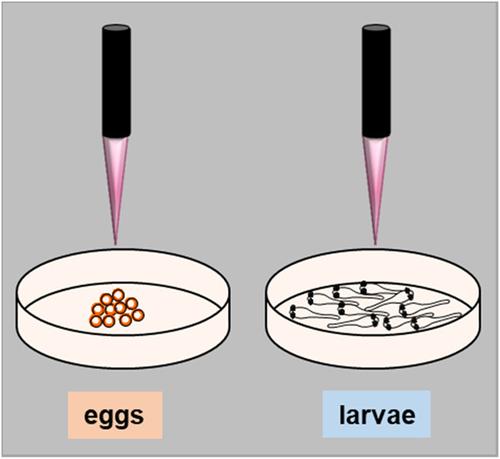当前位置:
X-MOL 学术
›
Plasma Processes Polym.
›
论文详情
Our official English website, www.x-mol.net, welcomes your feedback! (Note: you will need to create a separate account there.)
Zebrafish larvae as a toxicity model in plasma medicine
Plasma Processes and Polymers ( IF 3.5 ) Pub Date : 2020-12-07 , DOI: 10.1002/ppap.202000188 Rajesh K. Gandhirajan 1 , Nicole Endlich 2 , Sander Bekeschus 1
Plasma Processes and Polymers ( IF 3.5 ) Pub Date : 2020-12-07 , DOI: 10.1002/ppap.202000188 Rajesh K. Gandhirajan 1 , Nicole Endlich 2 , Sander Bekeschus 1
Affiliation

|
Plasma technology has emerged as a promising tool in medicine that, however, requires not only efficacy but also toxicological assessments. Traditional cell culture systems are fast and economical, but they lack in vivo relevance; however, rodent models are highly complex and necessitate extended facilities. Zebrafish larvae bridge this gap, and many larvae can be analyzed in well plates in a single run, giving results in 1–2 days. Using the kINPen, we found plasma exposure to reduce hedging rates and viability in a dose‐dependent manner, accompanied with an increase in reactive oxygen species and a decrease of glutathione in plasma‐treated fish. Modest growth alterations were also observed. Altogether, zebrafish larvae constitute a fast, reliable, and relevant model for testing the toxicity of plasma sources.
中文翻译:

斑马鱼幼虫作为血浆药物的毒性模型
血浆技术已经成为一种有前途的医学工具,但是,它不仅需要疗效,而且还需要进行毒理学评估。传统的细胞培养系统既快速又经济,但是它们缺乏体内相关性。但是,啮齿动物模型非常复杂,需要扩展设施。斑马鱼幼虫弥合了这一鸿沟,可以一次运行在孔板中分析许多幼虫,只需1-2天即可得出结果。使用kINPen,我们发现血浆暴露以剂量依赖的方式降低套期保值率和生存能力,同时伴随血浆处理的鱼中活性氧种类的增加和谷胱甘肽的减少。还观察到适度的生长变化。总之,斑马鱼幼虫构成了一种快速,可靠且相关的模型,用于测试血浆来源的毒性。
更新日期:2020-12-07
中文翻译:

斑马鱼幼虫作为血浆药物的毒性模型
血浆技术已经成为一种有前途的医学工具,但是,它不仅需要疗效,而且还需要进行毒理学评估。传统的细胞培养系统既快速又经济,但是它们缺乏体内相关性。但是,啮齿动物模型非常复杂,需要扩展设施。斑马鱼幼虫弥合了这一鸿沟,可以一次运行在孔板中分析许多幼虫,只需1-2天即可得出结果。使用kINPen,我们发现血浆暴露以剂量依赖的方式降低套期保值率和生存能力,同时伴随血浆处理的鱼中活性氧种类的增加和谷胱甘肽的减少。还观察到适度的生长变化。总之,斑马鱼幼虫构成了一种快速,可靠且相关的模型,用于测试血浆来源的毒性。



























 京公网安备 11010802027423号
京公网安备 11010802027423号